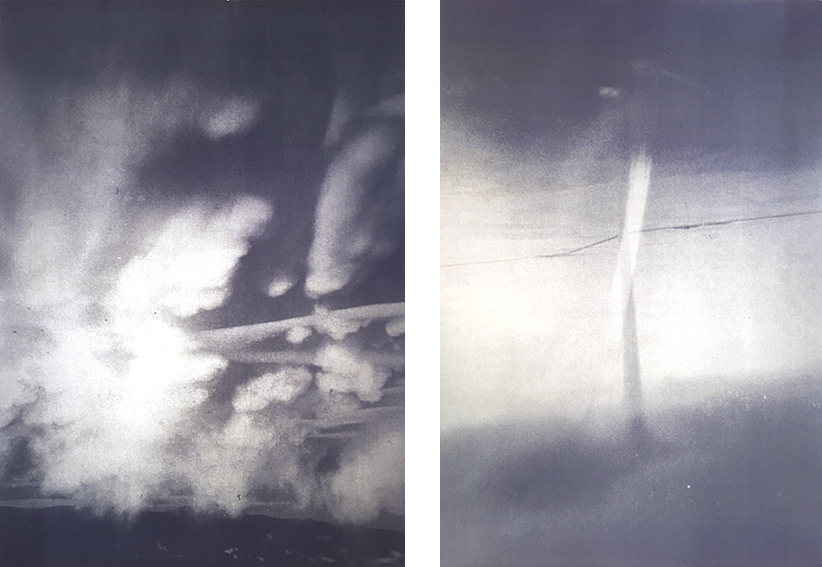We are happy to announce the participation of the Austrian visual artist Elisabeth Schmirl in the Sharing-Water Project. Her impressive body of work “Vanishing Point” deals with the ephemeral beauty of clouds and weather phenomena, thereby diving into the topics of wanting to control the uncontrollable and a critical approach to the exploitation of the natural resources by the driving force of production industry. By the following lines, we would like to share some thoughts on her artistic approach.
Elisabeth Schmirl is an observer of systems. She focuses on analogies between natural circuits (like the circular flow of water) and human engineered circulations – like the one of production and waste or digital systems of archiving. For Schmirl, artistic practice is a means to observe and scrutinize the increasing legacy of a production industry striving forward.
In her series “Vanishing Point” Elisabeth Schmirl works with images of weather phenomena taken from digital archives. They are assembled and edited in a collage and finally exposed as diazotypes.

The accumulation of information in digital archives is the starting point of “Vanishing Point”, both as a material source and conceptional approach. The archived datasets were taken in various contexts, often they were even photographed and collected at random. Therefore the usage of the images is questionable, a scientific utilization of the pictures is not possible.
By filing through the NOAA (National Oceanic and Atmospheric Association), a voluminous, digitalized collection of photographs of cloud formations and natural phenomena, Schmirl enters a world of random pictures of ephemeral events. Snapshots of drifting clouds – visual records of no use but being aesthetic products, or – possibly – poetic occurences.
The personal inspection of the footage starts into an artistic process at this point. In the emerging dialogue between the material and the artist, the images are disassociated from the potpourri of the archive. They get a structure, editing, they follow new directives, – they make sense. The playful mental process of hold and release, which can arise both by observing clouds or filing through archives, is a quality of “Vanishing Point” both in content, form and materialization.
The collages are exposed as handmade, unique whiteprints. But as diazotypes react to oxygen, the exhibition prints have an aging process inscribed. Depending on the framing and mounting of the whiteprints, they undergo a decoloration slow or fast, which can lead to the complete dissolving of the photographs of “Vanishing Point”.
